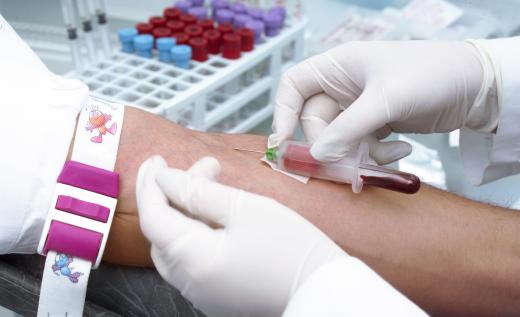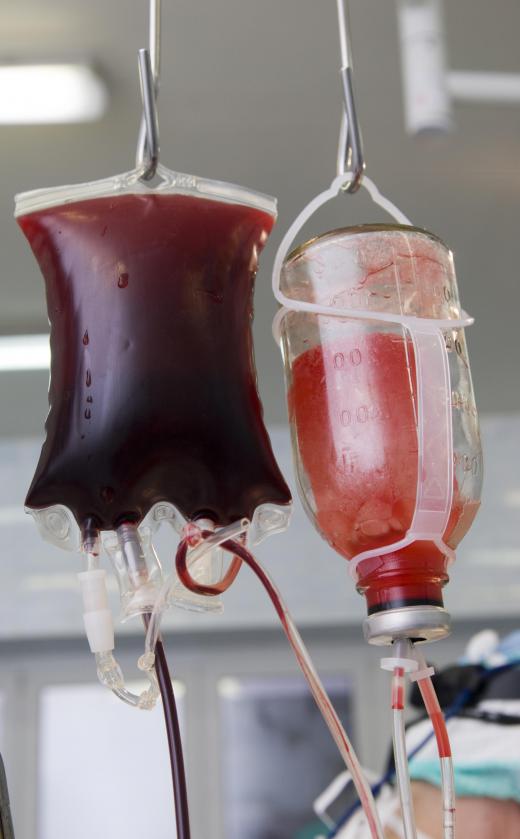What is the ELISA Method?
The ELISA method is a test which is used in immunology and other scientific fields to detect antibodies and antigens. ELISA stands for enzyme-linked immunosorbent assay, which refers to the fact that antibodies coupled to enzymes are used to determine the results of the test. The ELISA method is used in medicine to detect antibodies to diseases as a diagnostic measure, and is a common technique used in immunological and biochemical research.
The ELISA test was developed in the 1960s and 1970s as a replacement for immunological testing which involved the use of radioactive antibodies and antigens. The risks of using radioactive materials made the testing process cumbersome unsafe, and the advent of the ELISA method solved both of these problems. Instead of using radioactive materials to determine the results of a test, the ELISA uses enzymes which react with antibodies to form colored products. The development of color in an ELISA test indicates a positive result.

There are several different types of ELISA tests. The most commonly-used ELISA method is called the indirect ELISA; this is an antibody test used to determine whether a certain type of antibody is present in a sample, and at what concentration. In diagnostic medicine, this test is used to detect the presence of antibodies to infectious diseases such as HIV, hepatitis, and others. The presence of antibodies to these diseases indicates that the individual being tested has been exposed to the infectious agents. Typically, the sample used is of a patient’s blood.

In this test, a specific antigen protein is used to coat a microtitre plate. This small, plastic plate contains 96 tiny wells, and a single ELISA test can be carried out in each well. The antigen used for a given test depends on the type of antibody the test is trying to detect. For example, if the ELISA is used for an HIV test, the antigen used would be specific to this virus.

As the test proceeds, small amounts of the unknown sample are added to each well of the microtitre plate, and the plate is incubated to allow time for antibodies in the sample to bind to the antigen. Next, a secondary detection antibody is added to each well of the plate. If the sample contains any of the antibody type which is being tested for, it will bind to the secondary detection antibody during the subsequent incubation period.

The key to the ELISA method is that the secondary antibody is labeled with a particular kind of enzyme. The enzyme used is able to change the color of the test sample when it reacts with its substrate. Therefore, if a sample contains any of the antibody being tested for, adding the substrate to a well will cause it to change color, due to the presence of the secondary antibody and its associated enzyme.

There are other variations on the ELISA method, including a test called the sandwich ELISA. This is used to detect antigens in a sample, rather than antibodies. In this test, the microtitre plate is coated with a standardized sample of antibody. Next, the antigen test sample is added, followed by the addition of the secondary detection antibody and its associated enzyme. As with the indirect ELISA, the formation of a colored product indicates a positive result.
AS FEATURED ON:
AS FEATURED ON:



















Discussion Comments
If you have the symptoms of lactose intolerance (bloating, diarrhea, etc) and want to know if you have the conditions, there are lactate assay home kits that you can buy. They have meters and test strips that you can use with a blood sample, and they will tell you in minutes whether you are lactose intolerant.
It might save you a trip to the doctor, and the kits are quite inexpensive from what I’ve seen on the Internet.
Post your comments